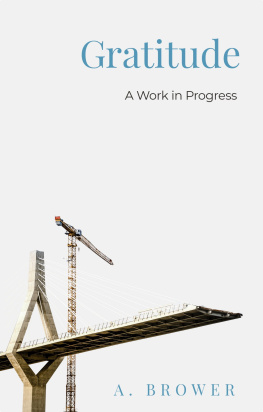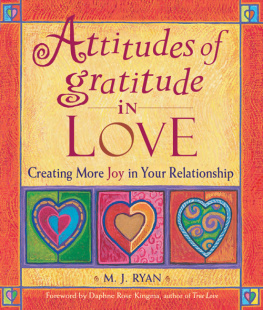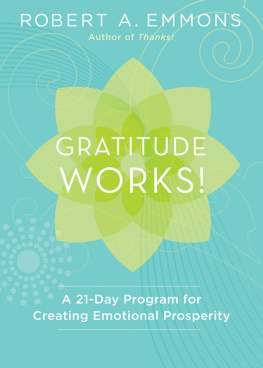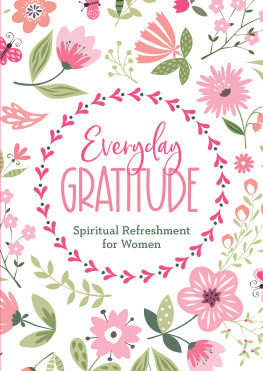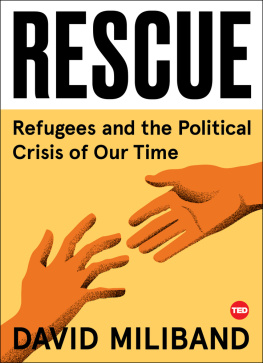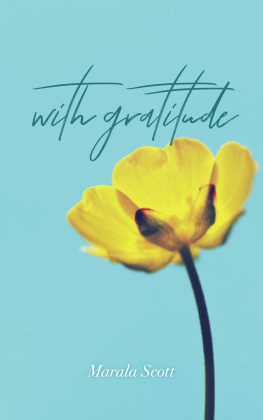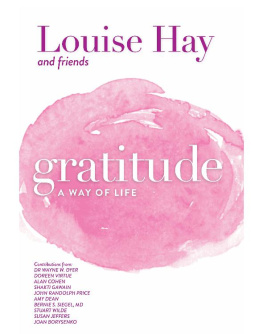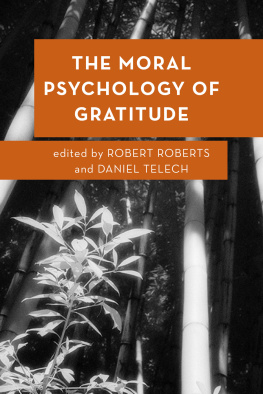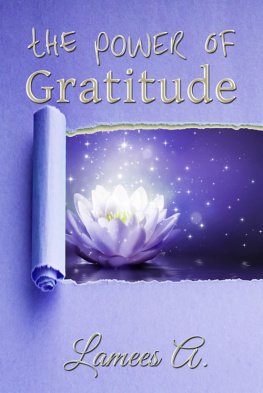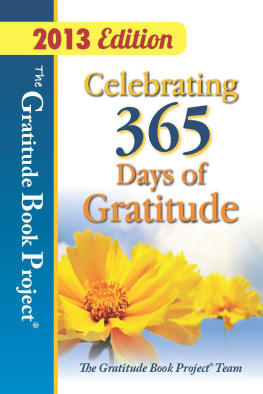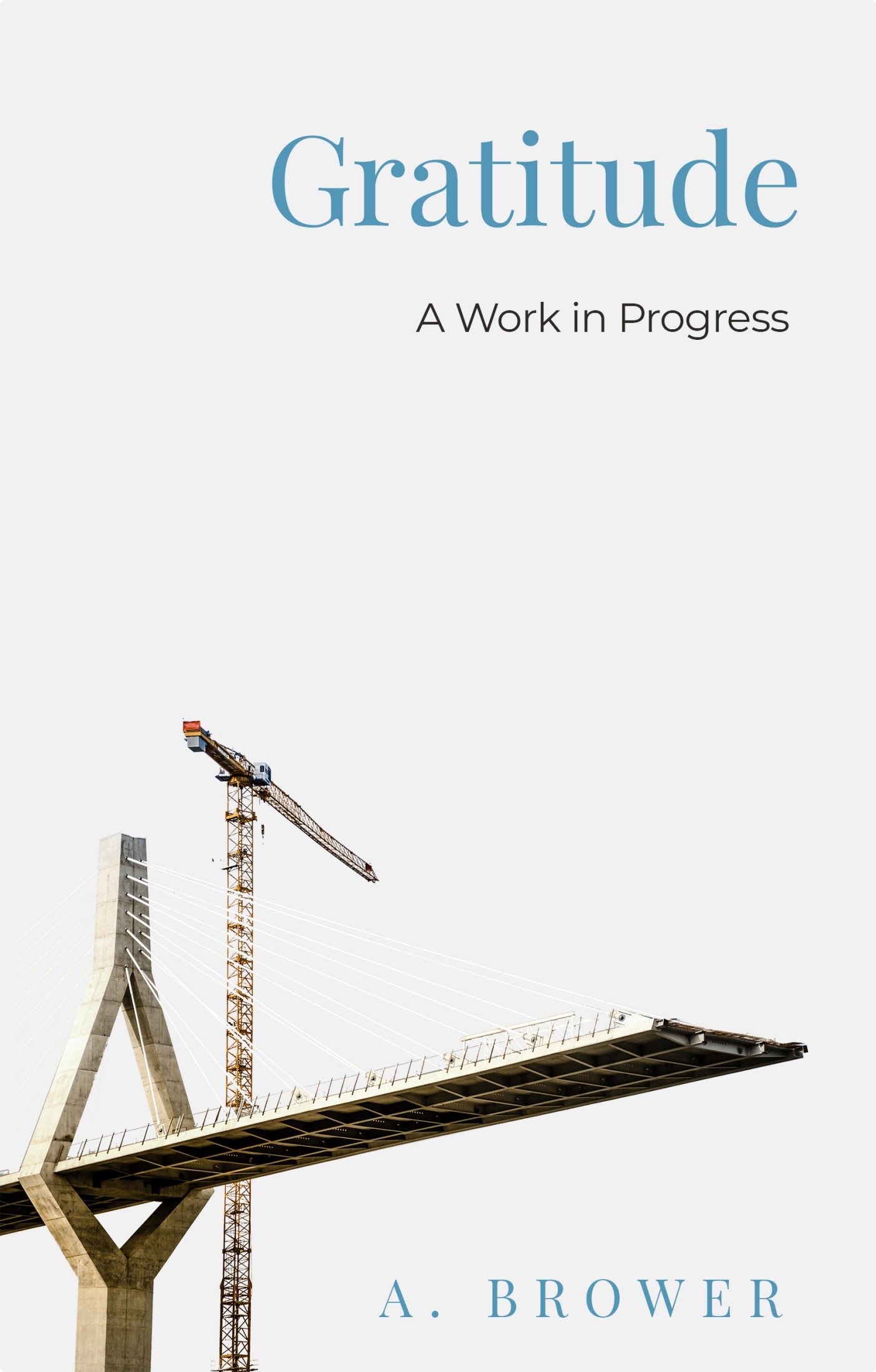gratitude : a work in progress
gratitude : a work in progress
by Austen Brower

New Degree Press
Copyright 2021 Austen Brower
All rightsreserved.
gratitude: a work in progress
ISBN 978-1-63676-729-1 Paperback
978-1-63730-038-1 Kindle Ebook
978-1-63730-140-1 Ebook
To my family, a book written by a Brower.
Wear gratitude like a cloak, and it will feed every corner of your life.
Rumi
gratitude :
The Hallmark thank you card, Sally, stood at attention on a coffee table prepared for her lifes mission. She was a small two-and-a-half-by-four-inch card, slightly textured with a bold blue Thank You centered on a field of white and fenced in by two blue lines. The pen, her commander in arms, was a simple blue and clear BIC that relaxed nearby. This thank you note was from an incredibly historic lineage. Sallys ancestors are from the ancient Chinese and Egyptian empires that once ruled the world, although they were slightly different, composed on papyrus and written as reminders of friendship or good luck notes. By way of Europe, Sallys ancestors immigrated to the US. In 1856, Louis Prang, a German immigrant, brought greeting cards and notes to America. As a Hallmark card, Sally was born in Lawrence, Kansas, at a production center. She departed for a department store and then landed on Austens desk in Washington DC.
Sally drifted between waking and sleeping for who knows how long until her day finally came. Taken up by the sender, she left the confines of the box, vaulted into the world quickly, coming to rest on a desk. Sally stretched out for the first time since she was closed, which revealed a blank canvas. To that day, she had wondered what gratitude she would fulfill. As her sender, Austen, started to write using the silent but focused BIC pen, Sally learned her purpose.
Austen had been a barista at La Colombe Chinatown DC next to Capital One Arena, where the Capitals hockey team played. He often conversed with guests as he took their orders and made drinks. On one particular evening, he crafted two lattes: one for a gentleman with a Capitals hockey lapel pin on his strapping suit and the other for the mans son. The guests sipped their lattes in peace. Upon leaving, the gentleman in the strapping suit offered Austen two tickets to the Caps game. To Austens surprise, he later watched the game five rows back from the ice behind the goal! The man with the lapel, Dr.Holtby, was more than a fan of the Washington Capitalshe was the team dentist. Months later, on July 16, Sally became Austens 172 thank you card of the year. He said, This note is long overdue, but know your kindness has resonated through my life. I have told many about your gesture! Family, friends, and acquaintances heard the story of Dr.Holtby. Kindness and gratitude spread each time.
To send Sally, Austen had donned and sealed her envelop. Address, postage, and return address (hopefully never to be used) were the final touches before she entered the United States Postal Service. Ben Franklin was the first Postmaster General in 1775. The systems purpose was to bind together the scatter populous of the new United States. The organization grew to employ over 633,000 employees, making it the third-largest civilian employer. Over one hundred and eighty-one million pieces of first-class mail are processed and delivered daily. With a giant organization servicing all the United States, it was no wonder the trepidation Sally felt entering the blue drop box on the corner of Colombia and Ontario RD NW. Though she was afraid, understanding her mission was vital to continue the chain of gratitude started with Dr.Holtby. She was ready. Over the next few days, she journeyed by van, was sorted by hand due to her square shape, returned to a van for transportation, and delivered by the good people of the US Postal Service, fulfilling her destiny!
Besides being cute, Sallys journey explains the odyssey thank you notes survive to arrive at their destinations. Throughout 20202021, I sent over 365 messages similar to Sally to family, friends, acquaintances, and strangers. My notes have traveled from DC to California, Ohio, and even the United Kingdom. The greeting card industrys infrastructure and interoperability, postal system, and history behind them are all astounding. Before starting our journey together, I wanted to highlight the trip many thank you notes take to bring simple gratitude to their recipients.
Bernie Seter, Thanksgiving And Thank You Notes, Northern Crossing (blog), November 24, 2018.
Boyce Upholt, The Tumultuous History of the U.S. Postal Serviceand its Constant Fight for Survival, National Geographic, May , .
.00
a journey
Grey weather settled over Washington, DC, as 2020 began. A year that would cause societal isolation started with many social gatherings. People were expected to hibernate in the winter. However, there was no time for resting as an MBA student. My girlfriend in San Diego and a flexible schedule left me to my own devices. Every weekend and many weeknights, my classmates and I partied. Hangovers were the outcome of that formula. I was disappointed in my productivity and lonely the mornings after. A busy school schedule and social media could not keep the loneliness away. Partying was fun and not always a harmful activity, but deep down, I knew most good things didnt leave someone wallowing in self-pity. Nursing a hangover one morning, I thought, Things must change.
Gratitude was the first thought that came to my mind. It would require me to reflect on positive elements of my life. Maybe I was a suck-up, but even as a kid, my parents friends would compliment me on my thank yous. But how to ritualize it? Before getting too far into brainstorming a solution, I brewed coffee. My days started with coffee, reading, and reflection. That morning, as I racked my brain for an answer, I drank deeply. My ritualized mornings were something I already did. I thought instead of creating a whole new self-improvement ritual, what if I added something to my morning one?
Drinking coffee and watching the sunrise reminded me of my dad. I observed him sipping coffee while writing thank you notes to family, friends, strangers, and business associates at an early age. The papers crisp lines, embossed letters, and his aggressively slanted handwriting prompted me to touch and admire the notes. The purpose of my dads messages were to maintain and develop relationships. Together, we would drop them at the post office and, on occasion, pick up donuts from a local shop. Remembering the why behind his notes, I decided to ritualize gratitude by sending thank yous.
My goal was to write a thank you note a day for a year. I believed I could push myself to be more self-aware and have an eye toward celebrating others in everything I did. The objective of my thank yous was to share positivity and strengthen relationships in my life and community. I had no clue what was in store. Days turned into months. The consistent act started to transform me. Relationships deepened, and my loneliness abated. I gave gratitude more willingly. My community grew. At the same time, sending notes seemed very simple, accessible, and sometimes insignificant. I wondered if my feelings and project were unique or part of a larger trend todaywhat I found changed the way I saw simple gratitude.
Today, we connect more than ever through a wide range of digital media, including text, tweets, and emails. Each day, the average internet user spends two hours and twenty-two minutes on social media, professionals receive about 120 emails, and Americans send around ninety-four text messages.

